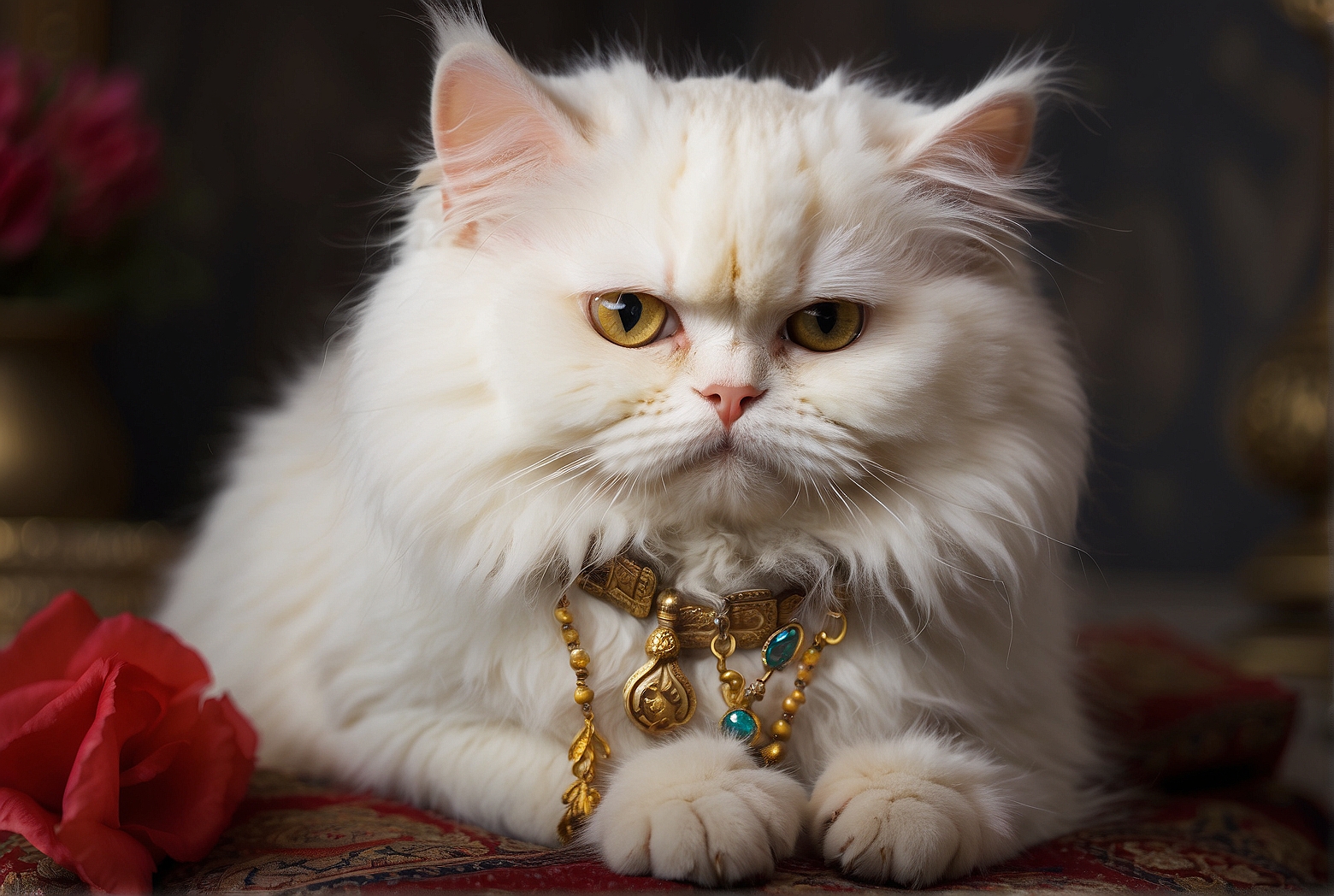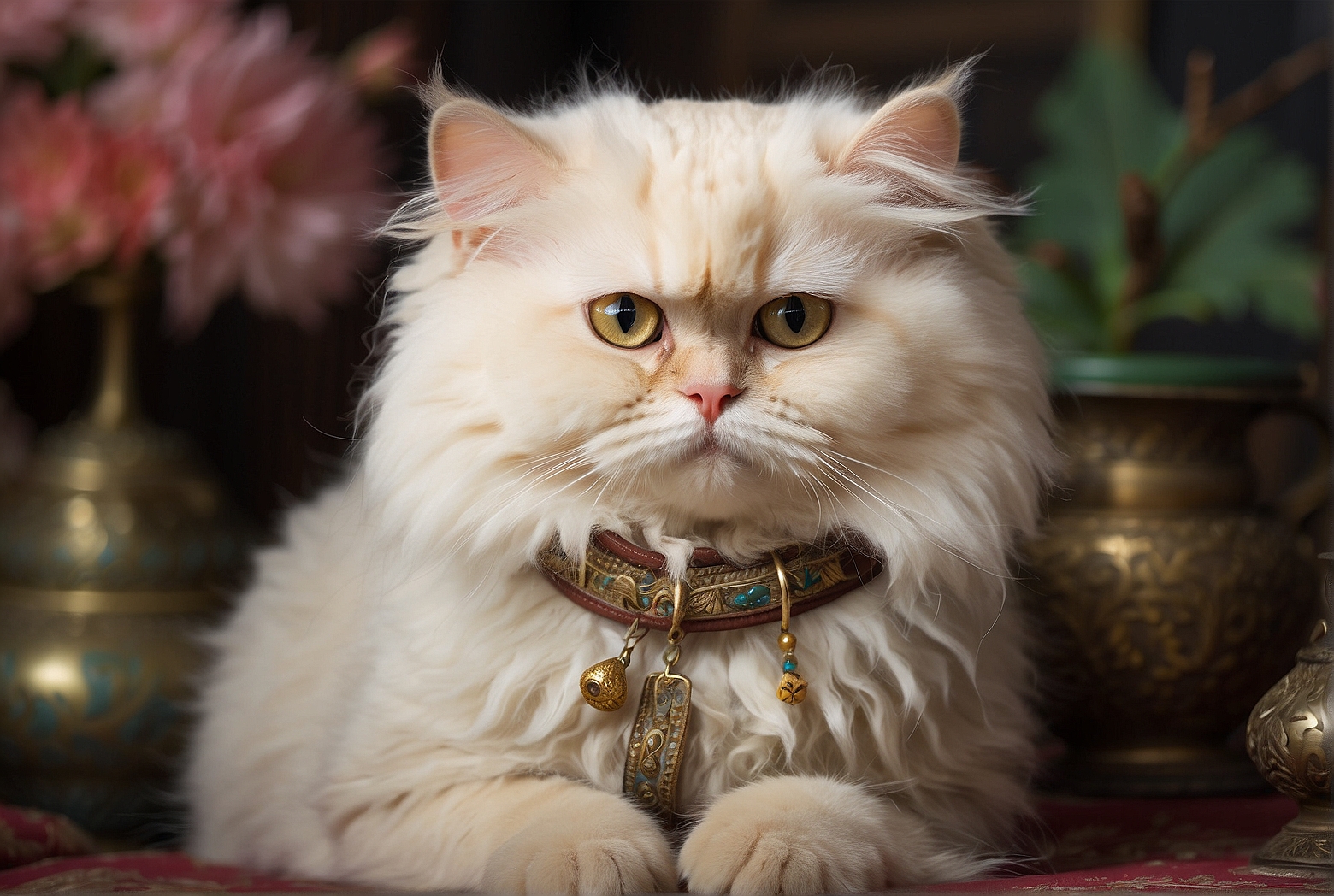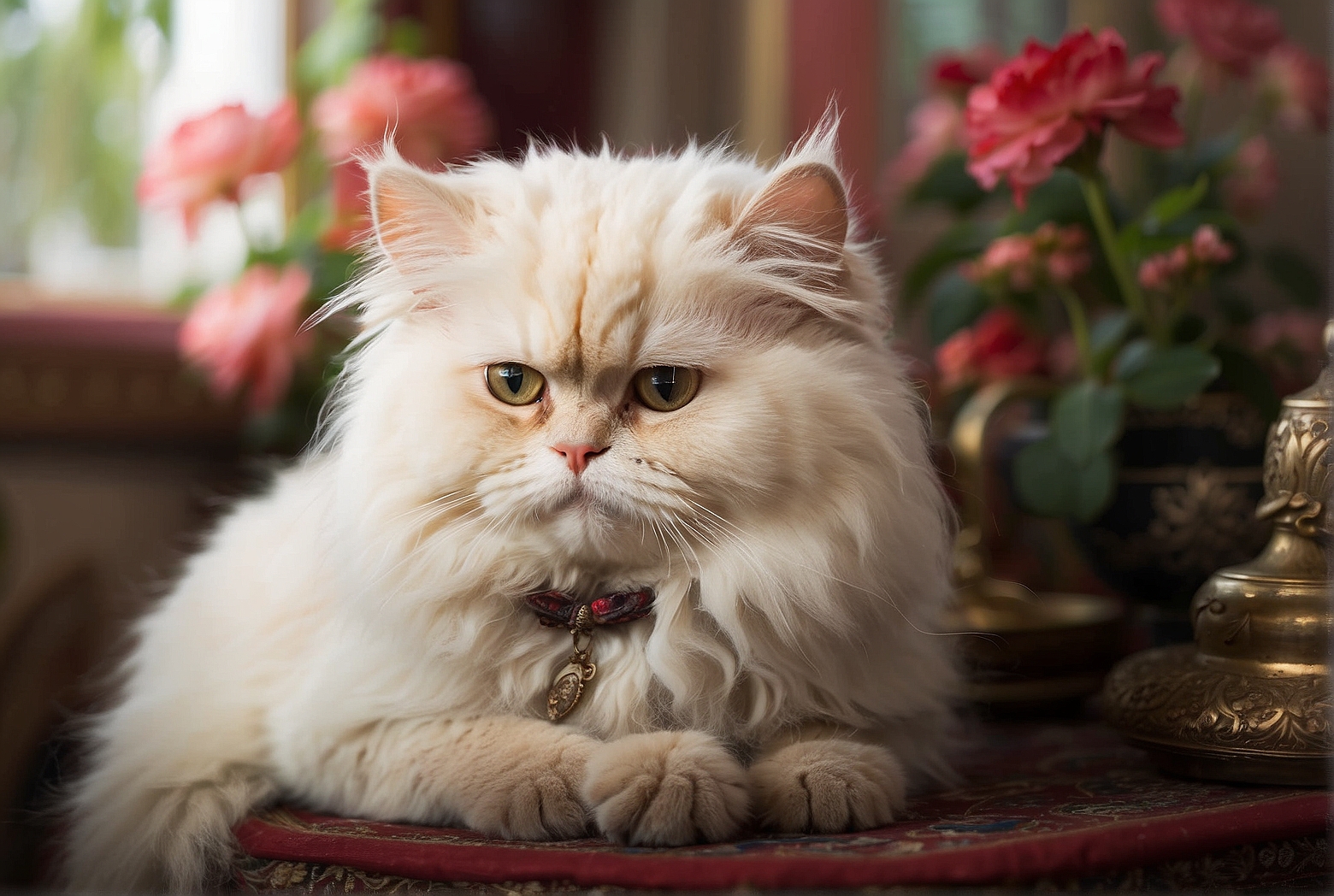Having a furry friend can be a great source of comfort and companionship. If you are considering bringing a Persian cat into your home, you might be wondering if they need a companion. Persian cats are known for their luxurious coats and calm demeanor, but do they truly require the company of another feline friend? Let’s explore whether Persian cats thrive with a companion or if they can be content on their own.
Benefits of Having a Companion for Persian Cats
Reduced Boredom and Loneliness
Persian cats are known for their calm and laid-back nature, but they can still experience feelings of boredom and loneliness. Having a companion can alleviate these feelings and provide much-needed social interaction for your Persian cat. With another furry friend around, your Persian cat will have someone to play with, snuggle up to, and engage in interactive behaviors. This companionship can greatly enhance your cat’s overall well-being and prevent them from feeling isolated, especially when you’re not at home.
Increased Mental Stimulation
Another valuable benefit of having a companion for your Persian cat is increased mental stimulation. Cats are naturally curious creatures, and having another cat or small pet around can keep them mentally engaged. The presence of a companion can encourage your Persian cat to observe, learn from, and even compete with their companion, which can lead to mental growth and improved cognitive abilities. This mental stimulation is crucial for preventing boredom-related behavioral issues and promoting a healthier and happier life for your Persian cat.
Enhanced Exercise and Playtime
Having a companion for your Persian cat can also contribute to enhanced exercise and playtime opportunities. Cats love to engage in interactive play, and with a companion, they will have a playmate to chase, wrestle, and romp around with. This increased physical activity can help your Persian cat maintain a healthy weight, improve muscle tone, and keep their joints and bones strong. Additionally, the presence of a companion can encourage your cat to explore and be more active, thus reducing the risk of obesity and associated health problems.
Factors to Consider Before Getting a Companion for Your Persian Cat
Age and Personality of Your Cat
Before introducing a companion to your Persian cat, it’s essential to consider their age and personality. Some Persian cats may be more tolerant and sociable, making them more likely to accept and bond with a new companion. However, older and more independent Persian cats might struggle with the addition of a new pet. Understanding your cat’s temperament and preferences will help you choose a suitable companion that complements their unique personality.
Space and Resources Available
Another crucial factor to consider is the space and resources available in your home. Persian cats, known for their luxurious coats and elegant appearance, require regular grooming and dedicated space for their care. Adding a companion means providing an additional litter box, feeding station, and comfortable resting areas. Make sure you have enough physical space and resources to accommodate the needs of both your Persian cat and their potential companion.

Time and Commitment
Introducing a companion to your Persian cat requires time and commitment on your part. Cats are territorial animals and may take time to adjust to a new addition. You’ll need to allocate enough time for supervised interaction, training, and attention for both your existing cat and the new companion. Additionally, you must ensure consistency in feeding, playtime, and other daily routines to maintain a harmonious environment for all pets involved.
Allergies or Sensitivities
Before getting a companion for your Persian cat, it’s important to consider any allergies or sensitivities that you or your family members may have. Some individuals may be allergic to certain types of pet dander or fur, which can lead to discomfort or health issues. It’s important to consult with your doctor or get allergy tests done to ensure the safety and well-being of everyone involved.
Types of Companions for Persian Cats
Another Persian Cat
If you’re considering getting a companion for your Persian cat, another Persian cat can be an excellent choice. Persian cats have specific grooming needs, and another Persian cat would have similar requirements. They’re also likely to have compatible temperaments, making it easier for them to bond and get along. Having a companion of the same breed can create a sense of familiarity and help reduce anxiety and stress during the introduction process.
Different Breed of Cat
Introducing a different breed of cat as a companion for your Persian cat can also be a fantastic option. Different breeds bring diversity in appearance, temperament, and play styles. When choosing a companion, consider a breed that complements your Persian cat’s demeanor and energy level. It’s crucial to introduce the two cats slowly and gradually to ensure compatibility and minimize potential conflicts.
Other Small Pets
If you’re open to alternative options, other small pets can also make great companions for Persian cats. Rabbits, guinea pigs, or even small dog breeds known for their compatibility with cats can provide companionship and engage in playful interactions with your Persian cat. However, make sure to research the specific needs and behaviors of the chosen small pet to ensure a safe and harmonious companionship between them and your Persian cat.
Introducing a New Companion to Your Persian Cat
Slow and Gradual Introduction
When introducing a new companion to your Persian cat, it’s essential to take a slow and gradual approach. Start by keeping the new pet in a separate room or area for a few days so that both cats can become familiar with each other’s scent. Swap bedding or toys between the two cats to help them get accustomed to each other’s presence. Gradually allow supervised visual interactions, such as through a crack in the door, before progressing to face-to-face meetings. This gradual introduction allows the cats to adjust to each other’s presence at their own pace, reducing the chances of aggression or stress.

Providing Separate Resources
During the initial stages of introduction, it’s important to provide separate resources for both cats. This includes separate feeding areas, litter boxes, and resting spots. Each cat should have their own safe space where they can retreat if they feel overwhelmed or need a break. By providing individual resources, you ensure that each cat has access to their essentials without feeling threatened or invaded.
Supervised Interactions
Even after the initial introduction, it’s crucial to continue supervising the interactions between your Persian cat and their new companion. This allows you to intervene if any signs of aggression or discomfort arise. Gradually increase the duration and frequency of supervised interactions, but always be ready to separate the cats if necessary. Remember, patience is key, and it may take weeks or even months for the cats to fully adjust and form a positive bond.
Signs That Your Persian Cat Needs a Companion
Excessive Vocalization and Attention-Seeking
If your Persian cat starts showing excessive vocalization and attention-seeking behaviors, it may be a sign that they need a companion. Cats are social animals and need interaction and companionship to thrive. When they feel lonely or bored, they may become more vocal, seeking your attention. Introducing a companion can provide an outlet for their social needs and reduce excessive vocalization and attention-seeking behavior.
Destructive Behavior
Loneliness and boredom can often lead to destructive behavior in cats. Your Persian cat may start scratching furniture, chewing on cords, or even urinating outside the litter box as a way to alleviate their frustration or seek attention. Having a companion can divert their energy and attention towards appropriate outlets, reducing the likelihood of destructive behavior.
Withdrawn and Depressed Demeanor
If your typically sociable and outgoing Persian cat becomes withdrawn and displays signs of depression, it may indicate a need for companionship. Cats are sensitive creatures, and a lack of social interaction can negatively impact their emotional well-being. Introducing a companion can provide the companionship and stimulation necessary to combat feelings of loneliness and depression in your Persian cat.
Alternatives to a Live Companion for Persian Cats
Stuffed Animals
If getting a live companion for your Persian cat is not feasible, providing stuffed animals can be a great alternative. Choose toys that resemble real animals, as they can provide a sense of companionship and comfort for your cat. You can even rotate the stuffed animals to keep things interesting and prevent boredom.
Interactive Toys and Games
Interactive toys and games can also serve as a suitable alternative to a live companion for your Persian cat. Toys that simulate hunting, such as puzzle toys or feather wands, can keep your cat mentally stimulated and physically active. Engaging your cat in play sessions using these interactive toys can help alleviate feelings of loneliness and provide a healthy outlet for their natural instincts.
Puzzle Feeders
Another way to keep your Persian cat mentally stimulated and entertained is by using puzzle feeders. These feeders require your cat to work for their food by solving puzzles or manipulating the feeder. This not only keeps them busy but also provides a form of mental stimulation and prevents them from overeating. Puzzle feeders can help replicate the hunting experience while providing a solitary activity for your Persian cat.
Potential Challenges of Having a Companion for Persian Cats
Territorial Disputes
One of the potential challenges of introducing a companion to your Persian cat is territorial disputes. Cats are territorial by nature, and it may take time for them to establish boundaries and accept the presence of another pet in their territory. It’s important to monitor their interactions closely and address any signs of aggression or resource guarding promptly. With proper introductions and gradual integration, most cats can eventually learn to coexist peacefully.
Allergies and Health Concerns
Another challenge to consider is allergies and health concerns. If you or any family member has allergies, it’s essential to choose a companion that is hypoallergenic or investigate alternative options for companionship. Additionally, you should ensure that both your Persian cat and the new companion are in good health and have up-to-date vaccinations to minimize the risk of any potential infections or diseases.
Increased Responsibility and Expenses
Adding a companion to your Persian cat means an increase in responsibilities and expenses. You’ll need to provide for the needs of both cats, which includes food, grooming, veterinary care, and regular vaccinations. Additionally, having two pets means doubling the time and effort required for their care. It’s crucial to be prepared for the added responsibility and financial commitment before deciding to get a companion for your Persian cat.
Conclusion
In conclusion, having a companion for your Persian cat can provide numerous benefits, including reduced boredom and loneliness, increased mental stimulation, and enhanced exercise and playtime opportunities. Before getting a companion, factors such as your cat’s age and personality, available space and resources, time and commitment, as well as allergies or sensitivities, should be carefully considered. Different types of companions, such as another Persian cat, a different breed of cat, or even other small pets, can be chosen based on compatibility and individual preferences. Introducing a new companion should be done gradually, with separate resources provided and supervised interactions initiated. Signs that your Persian cat may need a companion include excessive vocalization and attention-seeking behavior, destructive behavior, and a withdrawn or depressed demeanor. If getting a live companion is not feasible, alternatives such as stuffed animals, interactive toys and games, and puzzle feeders can offer engagement and mental stimulation. While there can be potential challenges, such as territorial disputes, allergies and health concerns, and increased responsibility and expenses, with proper preparation and care, introducing a companion to your Persian cat can greatly enrich their lives and provide them with the companionship they need.
